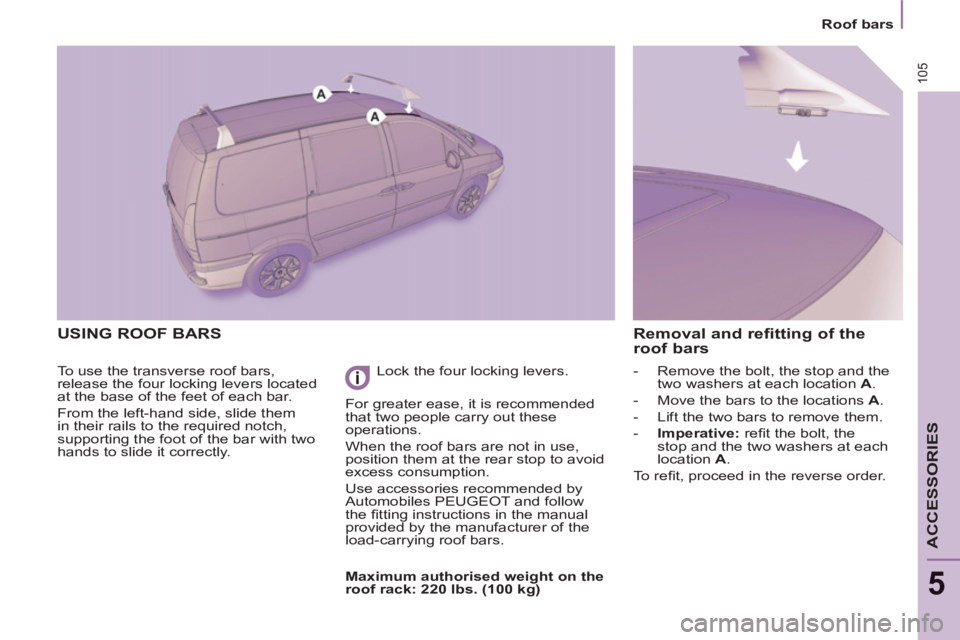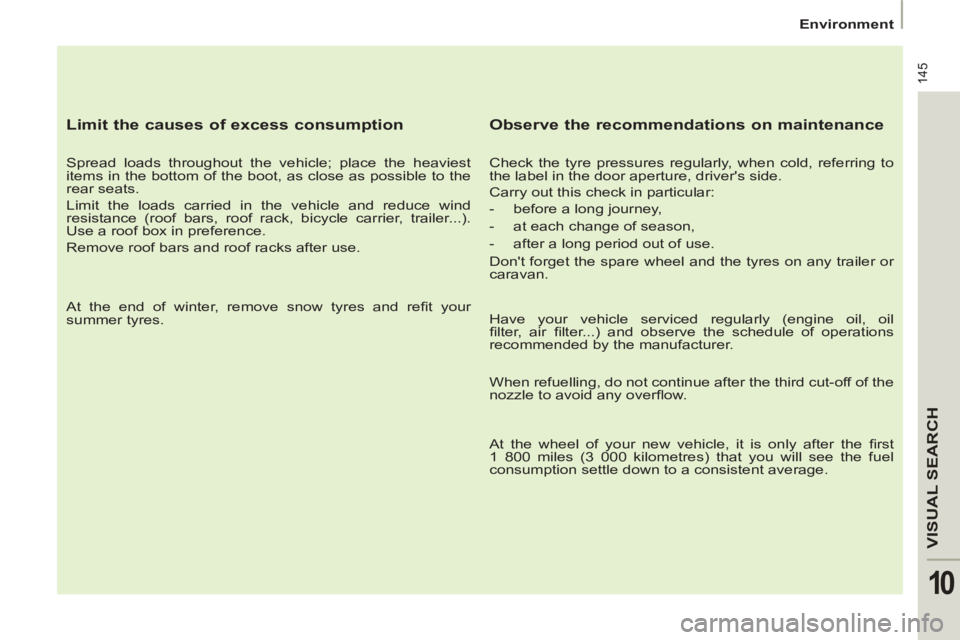105
Roof bars
ACCESSORIES
5
USING ROOF BARS
To use the transverse roof bars,
release the four locking levers located
at the base of the feet of each bar.
From the left-hand side, slide them
in their rails to the required notch,
supporting the foot of the bar with two
hands to slide it correctly. Lock the four locking levers.
For greater ease, it is recommended
that two people carry out these
operations.
When the roof bars are not in use,
position them at the rear stop to avoid
excess consumption.
Use accessories recommended by
Automobiles PEUGEOT and follow
the fi tting instructions in the manual
provided by the manufacturer of the
load-carrying roof bars.
- Remove the bolt, the stop and the
two washers at each location A
.
- Move the bars to the locations A
.
- Lift the two bars to remove them.
- Imperative:
refi t the bolt, the
stop and the two washers at each
location A
.
To refi t, proceed in the reverse order.
Removal and refitting of the
roof bars
Maximum authorised weight on the
roof rack: 220 lbs. (100 kg)
145
VISUAL SEARC
H
10
Environment
Limit the causes of excess consumption
Spread loads throughout the vehicle; place the heaviest
items in the bottom of the boot, as close as possible to the
rear seats.
Limit the loads carried in the vehicle and reduce wind
resistance (roof bars, roof rack, bicycle carrier, trailer...).
Use a roof box in preference.
Remove roof bars and roof racks after use.
At the end of winter, remove snow tyres and refi t your
summer tyres.
Observe the recommendations on maintenance
Check the tyre pressures regularly, when cold, referring to
the label in the door aperture, driver's side.
Carry out this check in particular:
- before a long journey,
- at each change of season,
- after a long period out of use.
Don't forget the spare wheel and the tyres on any trailer or
caravan.
Have your vehicle serviced regularly (engine oil, oil
fi lter, air fi lter...) and observe the schedule of operations
recommended by the manufacturer.
When refuelling, do not continue after the third cut-off of the
nozzle to avoid any overfl ow.
At the wheel of your new vehicle, it is only after the fi rst
1 800 miles (3 000 kilometres) that you will see the fuel
consumption settle down to a consistent average.

